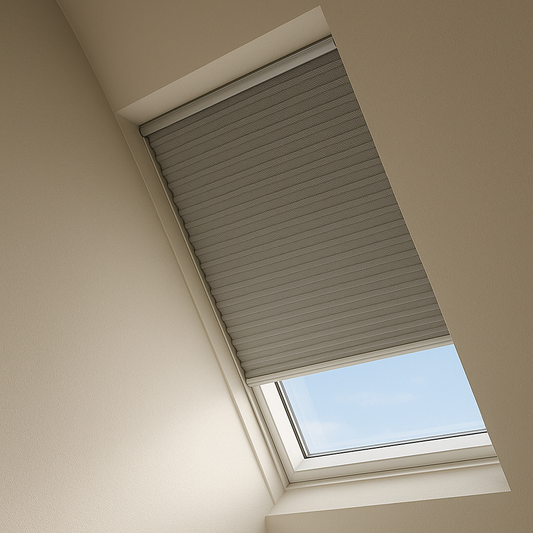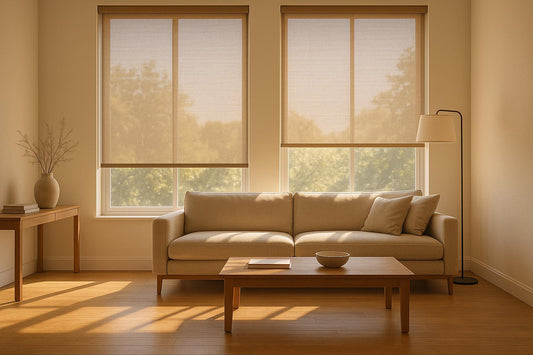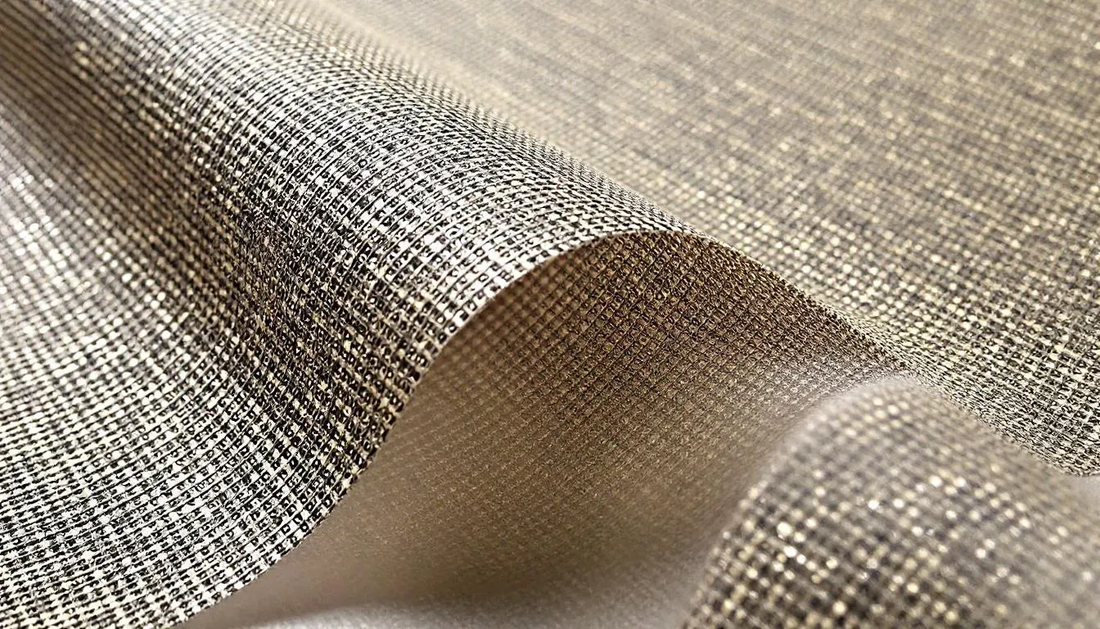
Solar Roller Shades 10% Openness: The Perfect Balance of Light and Privacy
When it comes to window treatments, finding the perfect balance between natural light, privacy, and energy efficiency can feel like solving a complex equation. Solar roller shades with 10% openness offer a compelling solution that addresses multiple needs without requiring you to compromise on any single factor. This openness factor represents a sweet spot in window covering technology, providing substantial UV protection while maintaining clear outdoor visibility and allowing generous natural light to illuminate your space. In the window treatment industry, this type of shade is commonly called a '10% openness solar roller shade'.
Understanding how 10% openness works and whether it’s the right choice for your home or commercial space requires examining the technical aspects, practical benefits, and real-world applications of this increasingly popular window treatment option.
Introduction to Solar Shades
Solar shades are a modern window treatment designed to manage sunlight, reduce glare, and create a clean look in any room. Whether you’re preparing food in a bright kitchen or relaxing in a sunlit bathroom, solar shades help you control the amount of natural light entering your space without compromising on style or functionality. These shades are especially useful in kitchens, where the work triangle—connecting the sink, stove, and refrigerator—needs to remain efficient and unobstructed. By choosing solar shades that are designed to fit your windows perfectly, you can create a comfortable environment for cooking, dining, and gathering with family, all while maintaining a clean and organized appearance. Solar shades are also ideal for bathrooms and living rooms, where privacy and light control are essential. With their sleek design and ability to enhance any space, solar shades offer a practical solution for homeowners who want to optimize their rooms without compromise.
What Are Solar Roller Shades with 10% Openness?
The term “openness” in solar roller shades refers to the percentage of open space within the woven fabric material. When you see a shade labeled with 10% openness, this means that 10% of the fabric consists of tiny, evenly distributed holes, while the remaining 90% is made up of tightly woven fibers. This precise engineering creates a mesh-like structure that allows controlled light transmission while maintaining the fabric’s structural integrity. Maintaining the correct form of the weave is crucial for the shade's performance and durability.
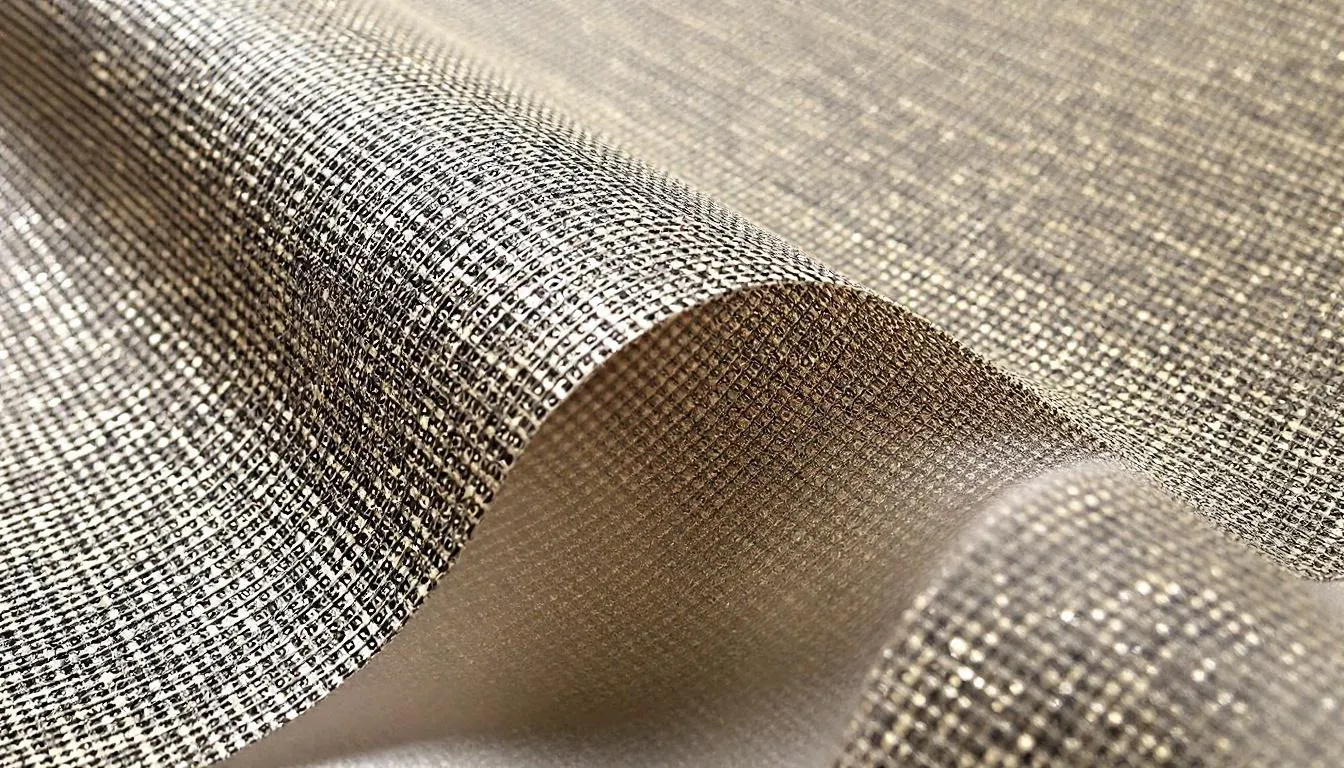
The openness factor directly correlates to how tightly the fabric is woven. A 10% openness represents a moderate weave density that strikes a balance between light filtration and visibility. In the comparison table below, you can see the line for 10% openness and how it compares to other options:
|
Openness Factor |
Light Transmission |
Outdoor Visibility |
Privacy Level |
UV Blockage |
|---|---|---|---|---|
|
1% |
Very Low |
Limited |
High |
95%+ |
|
3% |
Low |
Moderate |
High |
95%+ |
|
5% |
Moderate |
Good |
Moderate |
93% |
|
10% |
High |
Excellent |
Low |
90% |
|
14% |
Very High |
Maximum |
Very Low |
85% |
Solar roller shades with 10% openness filter light through this carefully engineered mesh, reducing glare and heat while preserving your connection to the outdoors. The fabric typically consists of a blend of materials, often around 30% polyester and 70% PVC, designed to maintain color integrity and structural stability even after prolonged exposure to direct sunlight.
This openness factor affects UV protection significantly. While 10% openness solar shades block approximately 90% of harmful ultraviolet rays, they allow more visible light transmission compared to tighter weaves. This makes them ideal for spaces where maintaining natural lighting is a priority, though it does mean accepting somewhat less privacy compared to lower openness options.
Benefits of 10% Openness Solar Shades
The primary advantage of choosing solar roller shades with 10% openness lies in their ability to preserve natural light while providing meaningful protection from the sun’s harmful effects. A key focus of 10% openness shades is balancing natural light and privacy, making them an ideal solution for homeowners who want both. Unlike traditional window treatments that often force you to choose between light and protection, these shades deliver both simultaneously.
Natural light preservation stands out as perhaps the most compelling benefit. These shades allow generous daylight to enter your space, reducing dependence on artificial lighting during daytime hours. This can lead to noticeable energy savings, particularly in rooms where lights would otherwise remain on throughout the day. The quality of natural light filtering through creates a bright, welcoming atmosphere that artificial lighting struggles to replicate. The main reason many homeowners choose 10% openness is to maximize daylight while still gaining effective UV protection.
UV protection remains substantial despite the higher openness factor. By blocking approximately 90% of ultraviolet rays, these shades protect your furniture, flooring, and artwork from fading damage. While this level of protection is slightly less than what 1% or 3% openness shades provide, it still represents significant value for homeowners concerned about preserving their interior investments.
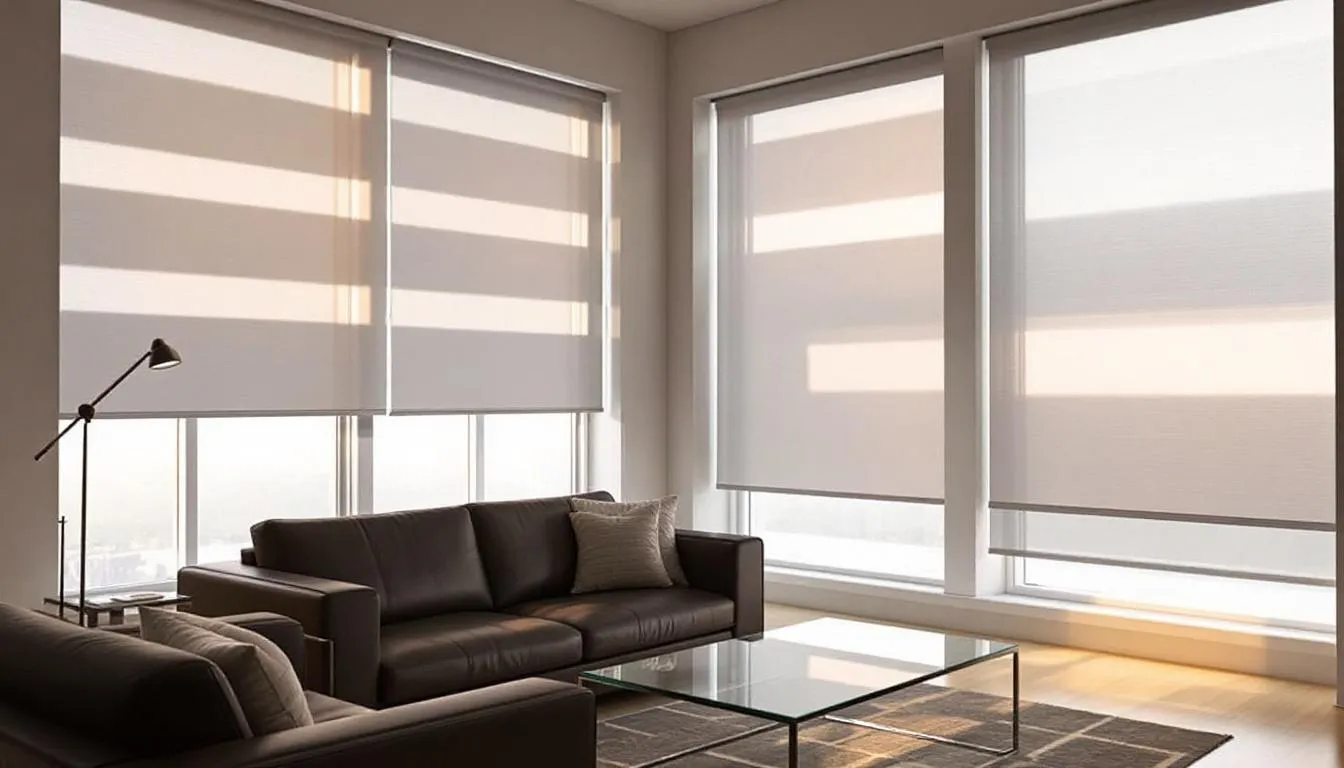
Glare reduction becomes particularly valuable for anyone who works from home or spends time watching television during daylight hours. The fabric diffuses harsh sunlight, creating more comfortable viewing conditions for computer screens and reducing eye strain. This makes 10% openness shades especially popular in home offices and family rooms where multiple activities take place throughout the day.
Energy efficiency benefits extend beyond reduced lighting costs. During summer months, these shades absorb and reflect a portion of solar heat before it enters your home, helping to moderate indoor temperatures. While they don’t provide the same level of insulation as blackout shades, they contribute meaningfully to climate control efforts, particularly when installed on south and west-facing windows that receive the most direct sunlight.
The daytime privacy these shades offer creates an interesting dynamic. From inside, you maintain clear visibility of outdoor activities, landscape features, and street scenes. However, from outside during daylight hours, the fabric creates enough visual barrier to provide reasonable privacy for most activities. This one-way visibility effect works well for ground-floor rooms where you want to maintain your connection to the outdoors without feeling exposed to passersby.
Best Applications for 10% Openness Solar Roller Shades on Windows
Home offices and workspaces represent one of the most ideal applications for 10% openness solar roller shades. The combination of glare reduction and natural light preservation creates optimal conditions for computer work, video calls, and reading. Many remote workers find that these shades eliminate the harsh reflections on screens that can cause headaches and eye fatigue, while still providing enough light to work comfortably without artificial lighting for most of the day.
These shades are suitable for a variety of homes, from modern to traditional, making them a versatile choice for different residential styles. For expert guidance on custom window shades, contact World Wide Shades.
Living rooms and family gathering spaces benefit tremendously from the balanced approach these shades provide. During the day, family members can enjoy natural light for reading, crafts, or simply relaxing, while evening television viewing becomes more comfortable due to reduced glare. The maintained outdoor visibility allows parents to keep an eye on children playing in the yard while enjoying the comfort of their indoor space. Additionally, these shades help create a comfortable environment for entertaining guests, ensuring everyone feels at ease during social gatherings.
Kitchen applications deserve special consideration, as this room requires both adequate lighting for food preparation and clear sight lines for safety and convenience. Solar roller shades with 10% openness allow cooks to prepare food safely while maintaining visibility of outdoor dining areas, gardens, or play spaces. The UV protection also helps preserve the appearance of kitchen cabinets, countertops, and backsplash materials that might otherwise fade from constant sun exposure. These shades also help protect kitchen appliances from sun exposure, extending their lifespan and maintaining their appearance. Kitchen layouts may vary by country, influencing both the design and the selection of shades to suit regional preferences and traditional cooking methods. In kitchens with a peninsula layout, solar shades provide excellent light control for the extended counter and seating area, making the space more functional and inviting.
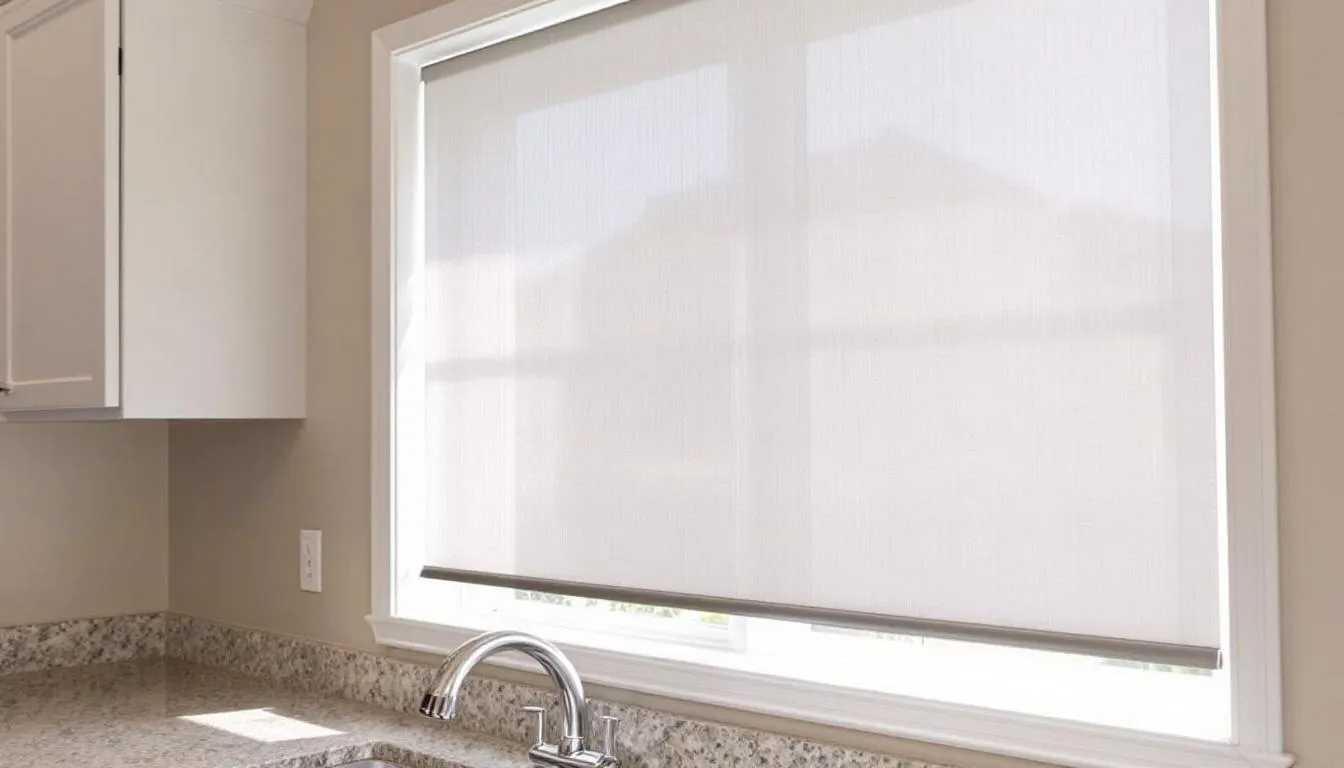
Bedrooms present a more complex decision point. While 10% openness shades provide some light control, they may not create the darkness many people prefer for sleep. However, for those who appreciate waking up gradually with natural light or who use their bedroom as a multi-purpose space during the day, these shades can work well. The key is understanding that nighttime privacy becomes limited when interior lights are on, as the openness allows some visibility from outside.
Commercial spaces, particularly office buildings, frequently choose 10% openness solar roller shades for conference rooms, reception areas, and open office spaces. The professional appearance combined with practical benefits like reduced HVAC costs and improved occupant comfort makes them an attractive option. Many businesses appreciate the way these shades maintain the connection between indoor and outdoor spaces, which can contribute to employee satisfaction and productivity. Solar roller shades can also be installed on glass doors in offices or restaurants, providing privacy and light control while maintaining a sleek, modern look.
Restaurant and cafe applications, especially for outdoor dining areas covered by pergolas or overhangs, benefit from the weather-resistant properties of quality solar shade fabrics. The 10% openness provides diners with protection from direct sunlight while preserving views of surrounding landscape or street activity that contributes to the dining experience.
Measuring for Proper Fit
Getting the right fit for your solar shades starts with accurate measurements of your windows. Begin by measuring the width and length of the window, making sure to note the highest point of the window frame. It’s important to account for any nearby cabinets, drawers, or other features that could affect the installation or operation of your shades. Consider the available space around the window to ensure the shades will function smoothly and provide the clean look you desire. Decide whether you want an inside mount, which fits the shade within the window frame for a streamlined appearance and can offer extra insulation, or an outside mount, which extends beyond the window to make the window look larger and maximize light coverage. Taking these points into account will help you achieve a precise fit and a polished finish for your solar shades.
Material Options and Fabric Choices
Polyester mesh fabrics dominate the solar shade market due to their excellent balance of durability, color retention, and consistent openness throughout the fabric. These materials resist stretching and maintain their shape even after extended exposure to wind and weather conditions. The fabric is specifically engineered to withstand daily wear, helping it maintain its appearance and performance over time. The polyester fibers accept dyes well, allowing for a wide variety of color options while maintaining the precise 10% openness factor across the entire shade surface.
Fiberglass materials offer superior heat resistance, making them particularly valuable for windows that receive intense direct sunlight or for commercial applications where fire safety regulations are a concern. These fabrics tend to be slightly more expensive than polyester options but provide excellent longevity and maintain their structural integrity even in extreme temperature conditions. The smooth texture of fiberglass also makes cleaning easier, as dust and debris are less likely to become embedded in the fabric.
PVC-free options have gained popularity among environmentally conscious consumers who want to minimize their use of vinyl-based materials. These alternatives often use polyester or other synthetic fibers with special coatings to achieve the necessary durability and UV resistance. While sometimes carrying a premium price point, they offer peace of mind for those concerned about indoor air quality or environmental impact.
Color selection plays a crucial role in both aesthetics and performance. Darker colors, such as charcoal, bronze, or black, provide better glare control and tend to offer slightly improved UV protection. However, they also absorb more heat, which can be transmitted into the room. Lighter colors like white, cream, or light gray reflect more heat away from the windows but may provide less glare reduction. The choice often comes down to balancing your primary concerns: maximum cooling effect versus optimal glare control.
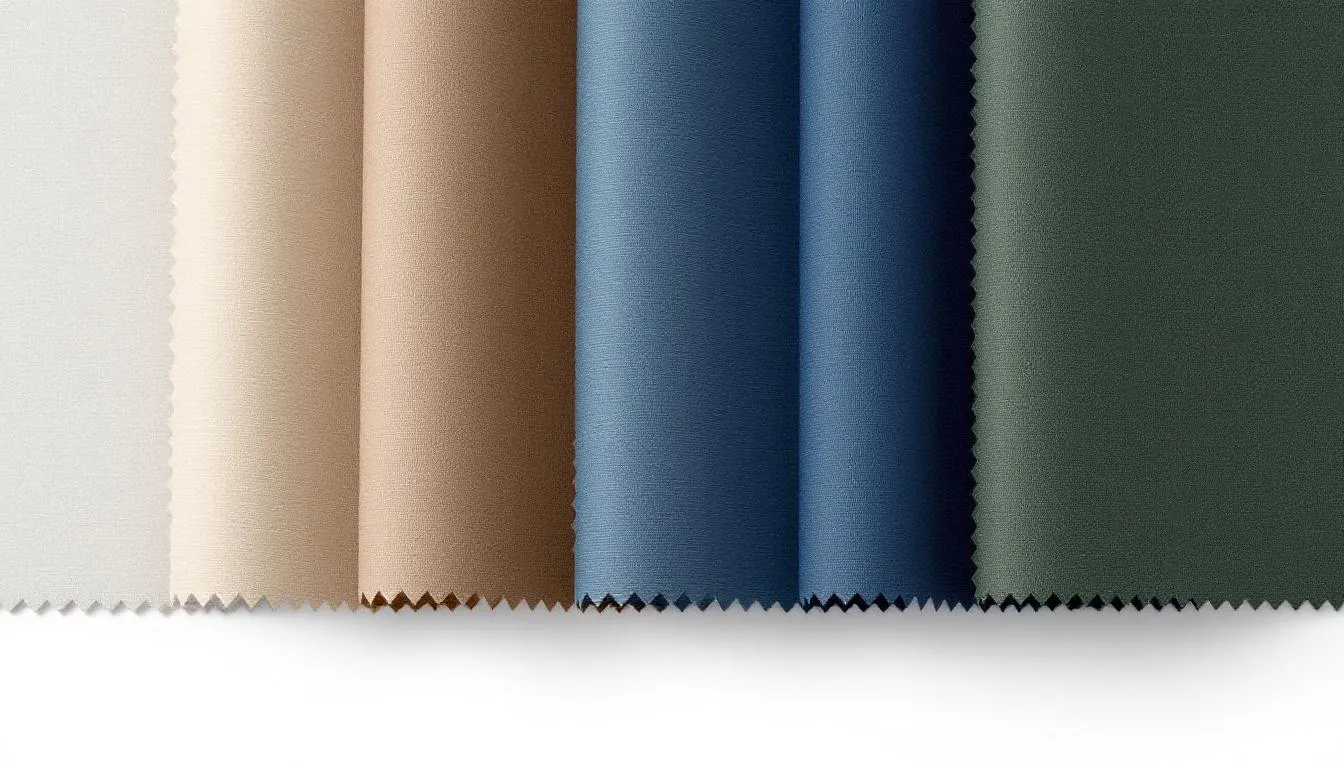
Texture variations range from smooth, almost transparent-looking weaves to more pronounced textures that create visual interest even when the shades are down. Smooth textures tend to provide the clearest outdoor visibility, while textured options can add architectural interest to a room’s design. Some manufacturers offer subtle patterns or variations in the weave that create visual depth without significantly impacting the shade’s performance characteristics.
When evaluating material options, consider the specific environment where the shades will be installed. Coastal areas with salt air may benefit from materials specifically designed to resist corrosion. Urban environments with higher pollution levels might require fabrics that clean more easily. The orientation of your windows and the intensity of sun exposure they receive should also influence your material choice, as some fabrics perform better under extreme conditions than others.
Design and Style Considerations
Solar shades are available in a wide variety of designs, materials, and colors, allowing you to customize them to suit any room in your home. Many manufacturers offer custom options to ensure your shades fit perfectly, whether you’re outfitting a kitchen with a large island or a bathroom with limited natural light. For example, in a kitchen, you might choose lighter shades that let in more daylight, creating a bright and inviting space for preparing food and spending time with family. In a bathroom, where privacy is a priority and windows may be limited, you can select shades that offer more coverage while still maintaining a clean look. With so many options to choose from, it’s easy to find solar shades that complement your room’s decor and meet your specific needs.
Installation Considerations
Inside mount installation creates the cleanest, most integrated appearance for solar roller shades with 10% openness. This mounting style positions the shade within the window frame, creating a seamless look that doesn’t interrupt the wall’s clean lines. However, inside mounting requires sufficient depth within the window frame and precise measurements to ensure proper fit. The shade mechanism needs adequate space to operate smoothly without interfering with window hardware or trim.
Outside mount installation offers maximum light coverage and flexibility when window frames lack sufficient depth for inside mounting. This approach extends the shade beyond the window opening, potentially blocking more light around the edges. To install outside-mount shades, attach the brackets to the wall above the window frame so the shade is located higher and wider than the window, maximizing coverage and creating the illusion of a larger window. Outside mounting also works well when you want to make windows appear larger or when dealing with irregular window shapes that make inside mounting challenging.
The decision between motorized and manual operation systems depends on several factors beyond just convenience. Motorized systems excel in hard-to-reach locations, such as tall windows or spaces above kitchen islands where reaching a cord might be difficult or unsafe. They also provide precise control over shade position, allowing you to adjust throughout the day as sun angles change. Many modern motorized systems can integrate with smart home automation, enabling scheduled adjustments based on time of day or sensor input.
Manual operation remains popular due to its reliability, lower cost, and independence from electrical systems. Continuous cord loops with safety clutch mechanisms represent the most common manual system. The choice between plastic and stainless steel bead chains often depends on the installation location - plastic chains resist corrosion better in humid environments, while stainless steel provides a more premium appearance in formal settings.
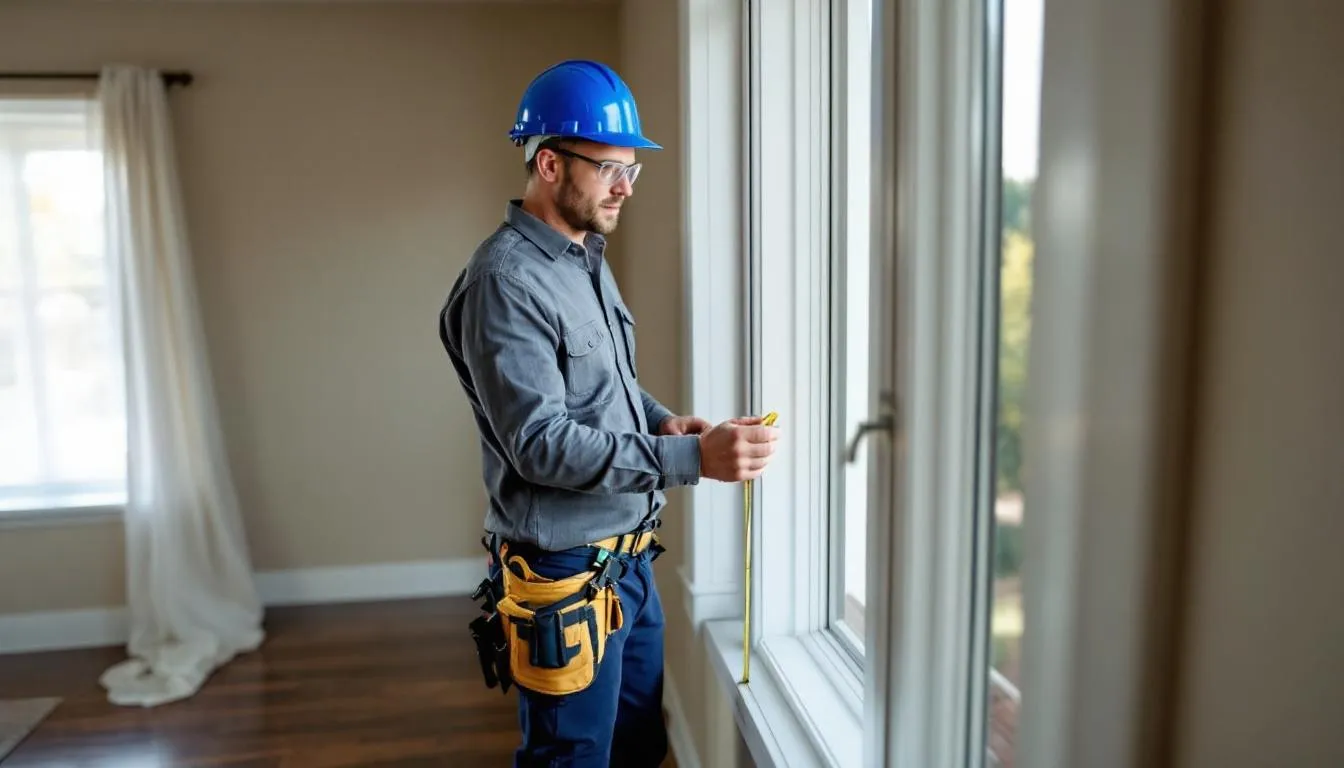
Proper measurement techniques are critical for successful installation. For inside mount installations, measure the width at the top, middle, and bottom of the window opening, using the narrowest measurement to ensure the shade will fit properly. Depth measurements must account not only for the shade mechanism but also for any window hardware that might interfere with operation. Height measurements should extend from the top of the opening to the desired stopping point, typically the windowsill. When planning where to install your shades, make sure they are located so as not to interfere with window hardware or trim for smooth operation.
Professional installation versus DIY considerations often come down to the complexity of your specific situation. Simple, single-window installations with standard measurements can often be handled by homeowners with basic tools and careful attention to instructions. However, multiple windows, motorized systems, or challenging architectural features may justify professional installation to ensure optimal performance and appearance. Professional installers also typically provide warranty coverage for their work, and reputable installers are usually insured, offering homeowners peace of mind during the installation process.
Consider the wall type when planning installation. Drywall installations require appropriate anchors to support the shade’s weight, especially for larger windows. Masonry or concrete walls may require special drilling techniques and fasteners. Wood framing generally provides the most straightforward installation, but it’s important to locate studs for secure mounting of heavier shade systems.
Maintenance and Care Tips
Regular dusting represents the most important maintenance task for solar roller shades with 10% openness. The open weave design means that dust and pollen can settle into the fabric structure, so consistent cleaning prevents buildup that becomes more difficult to remove over time. Use a soft brush attachment on your vacuum cleaner every 2-3 weeks, working from top to bottom with gentle strokes parallel to the fabric grain.
For routine cleaning, extend the shade fully and vacuum both sides using low suction settings. Pay particular attention to the bottom rail area where dust tends to accumulate. The small holes in 10% openness fabric can trap particles, so take your time during this process. Essential items for proper maintenance include a vacuum, soft brush, and mild soap. If you notice any loose threads or snags, resist the urge to pull them - instead, carefully trim them with small scissors to prevent further damage.
Spot cleaning techniques become necessary when dealing with specific stains or marks on the fabric. Mix a small amount of mild soap with lukewarm water - avoid harsh detergents or bleaching agents that can damage the fabric or affect its UV-resistant properties. Use a clean, soft cloth to gently dab the stained area, working from the outside of the stain toward the center to prevent spreading. Rinse the area with clean water and allow it to air dry completely before retracting the shade.
Annual deep cleaning helps maintain the fabric’s appearance and performance characteristics. For this more thorough process, you may need to remove the shade from its mounting hardware. One person can usually handle the cleaning, but a second person may be helpful for larger shades. Check your manufacturer’s instructions, as some fabrics can be gently hand-washed in a bathtub with mild soap, while others require professional cleaning services. Never put solar shade fabric in a washing machine or dryer, as the agitation and heat can damage the precise weave structure.
If you remove the shade for deep cleaning, place it on a clean table to inspect and clean it thoroughly. This provides a stable surface for careful examination and ensures you can reach all areas of the fabric.
Proper handling during operation extends the life of your solar roller shades significantly. Always raise and lower shades smoothly, avoiding quick jerking motions that can stress the fabric or mechanism. When removing or reinstalling the shade, support it with both arms to prevent damage. If using manual cord controls, pull straight down rather than at an angle, and never force a shade that seems to be sticking - investigate the cause rather than applying extra force.
Storage recommendations become important if you remove shades seasonally or during home renovations. Roll the fabric around a large tube to prevent creasing, and store in a dry, temperature-controlled environment. Avoid folding the fabric, as creases in solar shade material can become permanent and affect both appearance and performance.
When cleaning, note any changes in the fabric’s appearance or feel. High-quality 10% openness solar shades should maintain their shape, color, and flexibility for many years. If you notice significant fading, stretching, or deterioration of the openness pattern, it may indicate that the fabric has reached the end of its useful life or that environmental factors are more severe than the material was designed to handle.
Cost Factors, Warranty, and Value Considerations
The price range for solar roller shades with 10% openness varies significantly based on fabric quality, size, and operating mechanism. Basic polyester options for standard residential windows typically start around $100-200 per window for manual operation, while premium materials with motorized systems can reach $500-800 or more for larger installations. Custom sizing, special colors, or commercial-grade materials add to these base costs.
When evaluating costs, consider the size of your project and potential volume discounts. Many manufacturers and retailers offer reduced per-unit pricing for multiple windows, making whole-home installations more economical than piecemeal purchases. Commercial projects often qualify for additional discounts due to their scale and the potential for future business relationships. Additionally, the distance between windows can affect installation complexity and pricing, as closely spaced or unusually distant windows may require custom solutions or additional labor.
Long-term energy savings contribute significantly to the overall value proposition of solar roller shades. The combination of reduced cooling costs in summer and decreased lighting expenses year-round can amount to meaningful savings over time. A typical home might see 10-15% reduction in cooling costs for rooms with properly installed solar shades, though actual savings depend on climate, window orientation, and local energy costs.
The protection value for furniture and flooring represents another important financial consideration. UV damage to hardwood floors, carpets, and upholstery happens gradually but can be expensive to repair or replace. Quality furniture pieces, artwork, and window treatments themselves can fade significantly over just a few years of direct sun exposure. Solar roller shades with 10% openness block enough UV radiation to substantially slow this damage, potentially saving thousands of dollars in replacement costs over the shade’s lifetime.
Return on investment calculations should account for both direct cost savings and value preservation. In many cases, homeowners recover their initial investment in solar shades within 3-5 years through energy savings alone. When factoring in furniture protection and the improved comfort and usability of sun-facing rooms, the payback period often shortens considerably.
Warranty options vary among manufacturers but typically range from one year for basic products to 10 years or more for premium systems. Pay attention to what the warranty covers - some protect only against manufacturing defects, while others include fading, material failure, and hardware issues. Extended warranties may be available for purchase, which can be worthwhile for expensive installations or commercial applications.
Expected lifespan for quality solar roller shades with 10% openness typically ranges from 7-10 years under normal residential use. Commercial applications or extreme weather conditions may shorten this timeline, while careful maintenance and moderate use conditions can extend it. The investment per year of service often compares favorably to other window treatment options when considering the multiple benefits these shades provide.
Consider the total cost of ownership when making your decision. While the initial purchase price is important, factor in installation costs, maintenance requirements, and the value of benefits like energy savings and UV protection. A slightly more expensive shade that lasts longer or provides better performance may represent better value than the lowest-priced option available.
Professional installation adds to upfront costs but can be worthwhile for complex installations or to ensure warranty coverage. Many manufacturers require professional installation to maintain warranty protection, particularly for motorized systems. It is important to respect manufacturer guidelines during installation to ensure the warranty remains valid. The cost of professional measurement and installation typically ranges from $75-150 per window, depending on complexity and local labor rates.
The resale value impact of quality window treatments shouldn’t be overlooked. Well-chosen, professionally installed solar roller shades can enhance a home’s appeal to potential buyers, particularly in sunny climates where sun control is a significant concern. While you’re unlikely to recover the full cost of window treatments in increased home value, they contribute to the overall impression of a well-maintained, thoughtfully designed space.
Solar roller shades with 10% openness represent a practical solution for homeowners and commercial property managers who refuse to compromise between natural light and sun protection. This openness factor delivers substantial UV blocking, meaningful glare reduction, and valuable energy efficiency benefits while preserving the visual connection to outdoor spaces that makes rooms feel larger and more welcoming.
The key to success with these shades lies in understanding their strengths and limitations, then matching them to appropriate applications. They excel in spaces where maintaining outdoor visibility and natural light are priorities, such as home offices, living areas, and kitchens. However, they may not suit bedrooms or other spaces where maximum privacy or light blocking is essential.
When evaluating whether 10% openness solar roller shades are right for your project, consider your specific needs, budget, and long-term goals. The investment in quality materials and proper installation pays dividends through years of reliable performance, energy savings, and protection for your interior furnishings. Take time to measure your windows accurately, choose appropriate materials for your environment, and establish a maintenance routine that will extend the life of your investment.
Contact a window treatment professional to discuss your specific requirements and see fabric samples in your actual lighting conditions. This hands-on evaluation will help you make an informed decision that balances all your priorities while creating comfortable, attractive spaces you’ll enjoy for years to come.
Comparison to Other Window Treatments
When compared to other window treatments like blinds or curtains, solar shades stand out for their durability, ease of installation, and minimal maintenance requirements. They are designed to save space and provide a streamlined, modern appearance, making them ideal for rooms where space is limited. Solar shades are also easy to adjust, allowing you to control light and privacy with minimal effort. Many options come with a solid warranty, and repairs are typically straightforward if needed. Additionally, solar shades can help reduce energy costs by limiting heat gain in the summer and heat loss in the winter, making them a smart investment for any home. When deciding between window treatments, consider the long-term benefits of solar shades, including their low maintenance, warranty coverage, and ability to enhance the look and functionality of your space.
Conclusion
In conclusion, solar shades are a versatile and practical window treatment option that can enhance the functionality and aesthetic of any room in your home. By taking into account the work triangle in your kitchen, the available space, and your preferred design style, you can choose solar shades that perfectly suit your needs. Whether you want to create a clean and inviting kitchen, a relaxing bathroom, or a cozy living room, solar shades help you optimize your space and achieve a comfortable, stylish environment. With their durability, low maintenance, and energy-efficient benefits, solar shades are an excellent choice for homeowners looking to create a clean, well-designed, and functional home.

